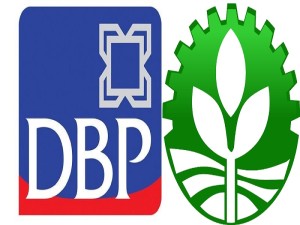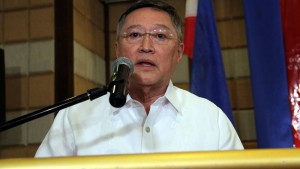Duterte administration stops DBP-Land Bank merger
MANILA — The Duterte administration has stopped the planned merger of state-run lenders Development Bank of the Philippines and Land Bank of the Philippines given a go-ahead by former President Benigno S. Aquino III early in 2016.
In a statement Tuesday, Department of Finance (DOF) spokesperson Paola Alvarez said an en banc resolution of the Governance Commission for Government Owned and Controlled Corporations (GCG) “resolved to cancel the implementation” of Executive Order (EO) No. 198 issued by Aquino in February.
The resolution was signed by GCG Chairman Jaime Ma. Flores III as well as Commissioners Michael Cloribel and Samuel Dagpin Jr.
Finance Secretary Carlos G. Dominguez III and Budget Secretary Benjamin E. Diokno, both sitting as ex-officio members of the oversight body for GOCCs, also signed the GCG resolution.
Alvarez said the GCG would send President Rodrigo R. Duterte a memorandum to inform him of the decision to scrap the merger.
The DOF pointed out that Dominguez had early on thumbed down the planned merger of the two banks that would have resulted into a lender with combined assets of P1.71 trillion, based on end-2015 BSP data, which would make it the country’s second biggest bank in terms of assets and seen challenging local tycoons’ dominance in the banking sector.
Dominguez had said a merger of DBP and Landbank “would not serve the public interest to transform the two institutions into one, given their different functions.”
“Landbank serves the agriculture sector, while DBP takes care of the needs of industry. Both were created for different purposes. I don’t see any rational reason to put them together,” Dominguez had said, adding that their merger “cannot be done without a law passed by Congress.”
“DBP is mandated to provide long-term financing, which requires bankers with markedly different sets of skills than those needed to extend short-term credit to farmers—Landbank’s primary job,” according to Dominguez.

Logos of the Development Bank of the Philippines and the Land Bank of the Philippines (RADYO INQUIRER)
The DOF said that while former President Aquino “claimed that the GCG had the power to merge state firms, like DBP and Landbank, without seeking prior approval from the Congress,” Dominguez maintained that “the two banks were set up through legislation, and, thus, only a law could legalize their merger.”
Landbank was formed under Republic Act (RA) No. 3844 in 1963, while DBP, originally the Rehabilitation Finance Corp., had been created under RA 85.
EO 198 ordered the merger of DBP and Landbank within a one-year timeline, with the latter as surviving entity.
The bigger lender to be established from the merger is being eyed to increase loans to infrastructure projects on top of initiatives under their developmental mandate.
“The merger will result in a combined single borrower’s limit (SBL) of P26 billion compared with DBP’s SBL at P9 billion and Landbank’s at P17 billion. A higher SBL enables the surviving bank to fund big-ticket infrastructure projects,” the GCG had said in a briefing paper.
Once merged with DBP, the surviving entity Landbank will not only be the second largest lender in terms of deposits with nearly P1.3 trillion. “In terms of loans and capitalization, it will be fourth [biggest] at P583 billion and P114 billion, respectively. Thus, it shall provide a more stable and stronger base for developmental financing,” the GCG had noted.
According to the GCG, “more underserved and unbanked areas will be reached by the surviving bank through rationalization of the existing branch networks of DBP and Landbank.”
“Planned branch openings and relocation of branches will expand the reach of the surviving bank to 298 cities and municipalities. With its wider presence, the surviving bank can offer more financial services to overseas Filipino workers, small and medium enterprises, and the agriculture-agrarian reform sector who are the natural customers of its branch network,” the GCG had said.
Also, the surviving bank will have an automated teller machine or ATM network of 1,670 nationwide, which the GCG said “can also provide access for beneficiaries of the 4Ps [Pantawid Pamilyang Pilipino Program].”
The GCG earlier said the consolidated bank “will be more effective, efficient and sustainable in carrying out the mandates of both banks, particularly in anticipation of the wave of foreign banks that may enter the Philippine market upon the occurrence of Asean integration in 2015.” SFM/rga















